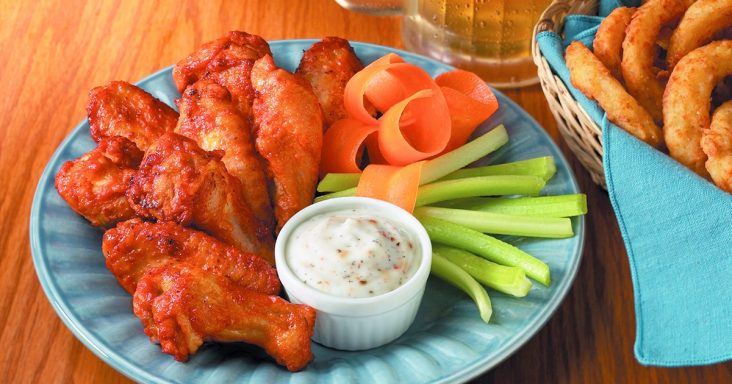Tyson Foods, chicken competitors benefit from robust wing demand
by January 23, 2020 3:07 pm 768 views

Chicken wings remain a staple of Super Bowl gatherings, with projections of 1.4 billion wings being consumed during the big game slated for Feb. 2, according to the National Chicken Council (NCC).
The trade association said the chicken sandwich might have been the hot item in 2019, but wings will take center stage during Super Bowl weekend, at a record 2% higher than last year.
NCC said Americans will eat 27 million more wings during this year’s game weekend compared with last year’s. To put that in perspective, if Kansas City Chiefs coach Andy Reid ate three wings per minute, it would take him about 900 years to eat 1.4 billion wings.
If 1.4 billion wings were laid end-to-end they would circle the Earth three times. Those wings weigh a combined 175 million pounds, equal to 87,500 tons or as much as 17,500 average size elephants.
NCC said 65% of Americans who eat chicken wings claim they like to do so while watching a major sporting event like the Super Bowl. More than half (51%) said chicken wings should be the official food of the Super Bowl.
“Football is great. Wings are great. But they’re even better together,” said NCC spokesman Tom Super. “Sure, you can have your chips, your guacamole, your pizza. But when it comes to Super Bowl menus, wings rule the roost. So grab a wet nap, dive in and help put a dent in that 1.4 billion.”
The U.S. Department of Agriculture (USDA) reported Jan. 17 prices for retail chicken wings were an average $2.10 per pound, the most expensive part of the bird. The week prior retail prices averaged $2.36 per pound which was 21-cents higher than a year ago.
By region, whole wing prices were the highest in the Northeast at $3.16 per pound. In the Southeast, whole wings retailed at $2.48 and at $2.25 in the Midwest. Wings were cheapest in the South Central state like Arkansas, Oklahoma and Texas at $1.39 per pound. In the Southwest and Northwest regions, wing prices average about $2.99 per pound. Hawaii has the highest price at $3.99 per pound.
Restaurants often offer boneless varieties and these prepared food prices averaged $6.07 per pound last week, according to USDA. Prices increased from $4.99 the prior week. Compared to a year ago, boneless wing prices at prepared food venues are slightly lower.
Last week’s wings were the second-highest prepared foods featured by retail outlets, second only to rotisserie chicken, according to the USDA report. USDA said the supply of wings is tight and in good balance with the uptick in seasonal demand which is keeping wholesale prices high.
Chicken processors like Tyson Foods averaged about 11 cents per pound in processing margins in 2019. That is before further processing, which can include pre-cooking, marinating, breading and deboning. Increased production has kept wholesale chicken prices from appreciating through much of the back half of 2019. Margins are expected to increase a bit this spring with higher prices for wings, tenders and breasts.
Derrell Peel, an agriculture analyst at Oklahoma State University, said chicken demand will likely pick up as more shipments make their way to China and the seasonal high for wings and tenders is now underway. He said prices have somewhat resilient in spite of increased production and now that exports are back in play, it should help keep demand strong for much of 2020 which is a positive for Tyson Foods and its competitors.
